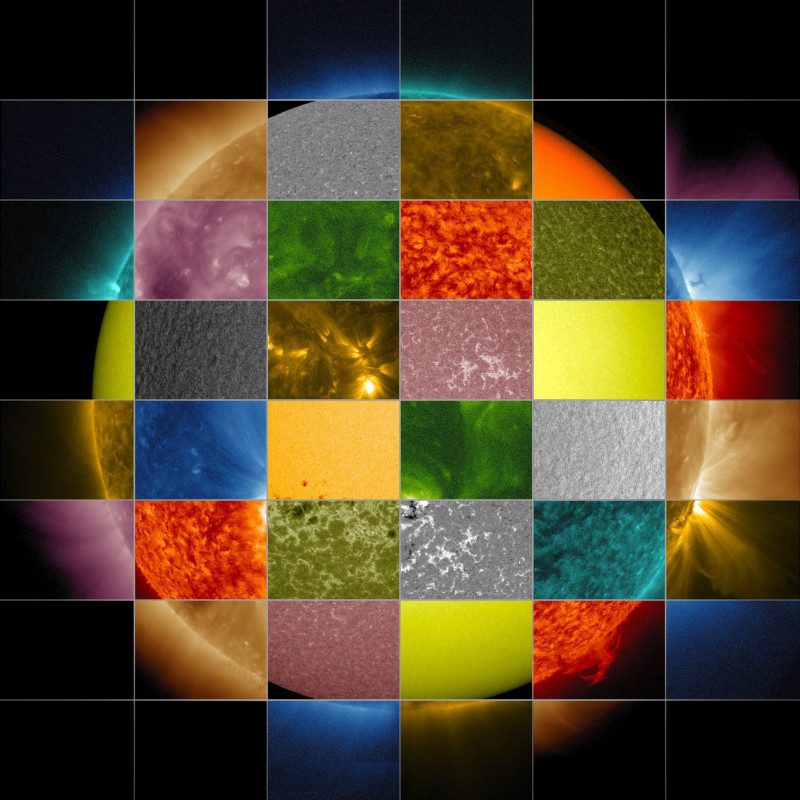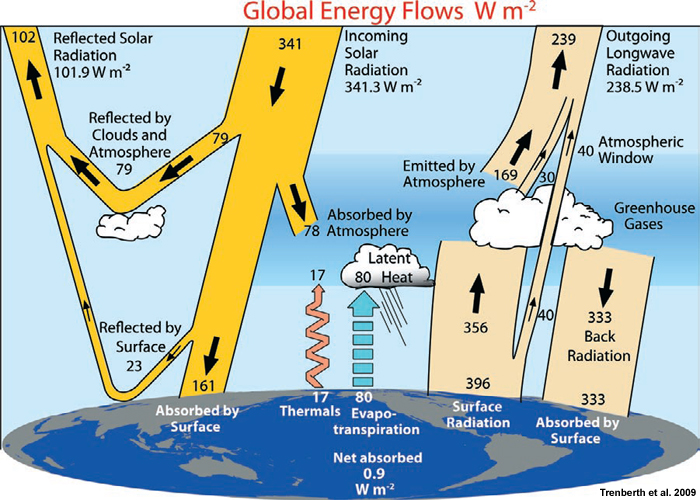Earth Sciences and Ecology
Energy Balance of the Earth
By Mark Ciotola
First published on April 30, 2019. Last updated on April 21, 2021.
Sources of Energy
Sunlight is the chief source of energy for the Earth. Gravitational contraction provides a tiny amount. Tidal interactions with the Moon provide a small but significant amount at the surface. Radioactive decay provides an important source of energy below the Earth’s surface. The burning of fossil fuels can release considerable heat locally (enough to upset ecosystems), but the total amount of heat released is small compared to that from solar and radioactive heating.

Sun photographed in various wavelengths. (Credit: NASA)
Energy in the Atmosphere
The Earth is bathed in sunlight. Some of that sunlight is reflected back into space by the Earth’s surface and atmosphere. The reflectivity of the Earth is called its albedo. Some of the remaining sunlight directly heats up the atmosphere. A small amount is absorbed by processes such as photosynthesis.
Much of the remaining sunlight heats up the Earth’s surface. As surface temperature becomes raised, the Earth emits increasing amounts of infrared energy. This radiation in turn further heats the atmosphere. Much atmospheric radiation is re-emited to the Earth’s surface. Some of it eventually makes it to the upper atmosphere and is radiated back into space.
The amount of energy entering and leaving the Earth’s atmosphere is called its energy balance. If more energy enters the Earth’s atmosphere than is emitted, the temperature of the Earth’s atmosphere increases. This is the current situation and is called global warming. Climate change results from global warming.

Solar energy flows into and through the Earth’s atmosphere; most gets radiated back into space.
Energy flows to and from the Earth’s surface and atmosphere (credit: U.S. Govt.)
Resources
- NASA Earth Energy Budget poster
Further Reading
- NOAA Earth-Atmosphere Energy Balance
- NASA Climate and Earth’s Energy Budget(more detailed information)